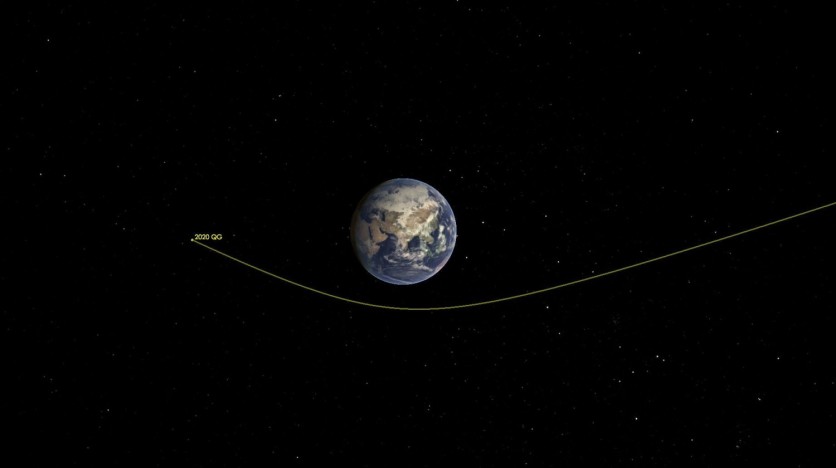NASA is tracking a huge asteroid that is set to collide with the Earth's orbit on September 6.
The Near-Earth Object (NEO) is almost twice the size of the Great Pyramid of Giza at about 270m wide and flies at 31,400mph towards the Earth.
The space rock, called 465824 (2010 FR), was first spotted by astronomers in 2010. Since it crosses the Earth's orbit, it is classed as an Apollo asteroid.

Fortunately, the Center for Near-Earth Object Studies (CNEOS) scientists said the asteroid is not a threat to human life. A NEO is an astronomical object that flies at 1.3 astronomical units (AU), which is the average distance between the Sun and the Earth.
Currently, NASA is tracking around 2,000 asteroids and comets, which are 90% of rocks that can be a threat to the Earth. These asteroids usually measures 460 feet in diameter and can easily be spotted.
The closest flyby of a car-size rock
On August 16, NASA has recorded the closest flyby to the Earth by a car-size asteroid, which happened above the Indian Ocean at 1,830 miles far from the planet.
"It's really cool to see a small asteroid come by this close, because we can see the Earth's gravity dramatically bend its trajectory," said CNEOS Director Paul Chodas adding that their calculations show that the rock asteroid even turned by about 45 degrees as it passed by the Earth.

While NASA admitted it did not see the space rock coming, the Zwicky Transient Facility was able to take a wide-field camera image of the 2020 QG as it was heading away from Earth, six hours after the closest point of approach. "We didn't see it coming," Dr. Chodas told Business Insider. Nevertheless, the director noted that it is still "quite an accomplishment" to observe tiny close-in asteroids, which quickly pass by.
Based on the image, QG's size lies between 6 feet (2 meters) and 18 feet (5.5 meters) wide with speed at about 27,000 mph, which is nearer than the distance between Los Angeles and New York City. It also flew more than 130 times closer than the Moon to the Earth at 230,000 miles. Despite the close distance, the rock did not pose a threat to the planet.
Read also: NASA's Hubble Reveals Andromeda's Giant Gas Halo is Colliding With Milky Way
NASA expects 10 NEO flybys in September
Aside from the 465824 (2010 FR), NASA is expecting nine other NEOs in September. Two asteroids will pass by the planet on the September 1. At 5:30 a.m., 2020 QG5 will approach the Earth while 2011 ES4 will flyby at 4:12 p.m. On September 2, 2020 PG6 will pass by at 8L43 a.m., then 465824 (2010 FR)'s arrival on September 6.
On September 6, another rock will flyby on September 8 while an asteroid will pass by the Earth daily from September 12 to September 14. Then, on September 17 and September 20, two other asteroids are expected to pass by.
For October, the agency is also expecting 10 asteroids to flyby between October 1 and October 29. Hopefully, none of these rocks will pose a threat to the Earth.
Read also: Tricks to Capture the Rare Moon, Jupiter, and Saturn Alignment This Weekend!
This is owned by Tech Times.
Written by CJ Robles
ⓒ 2025 TECHTIMES.com All rights reserved. Do not reproduce without permission.




